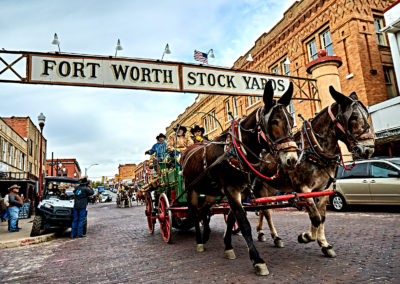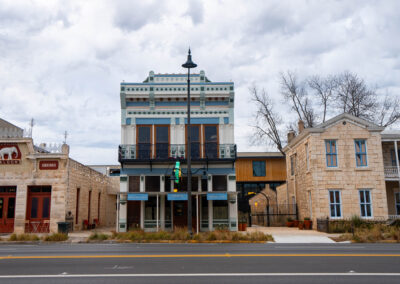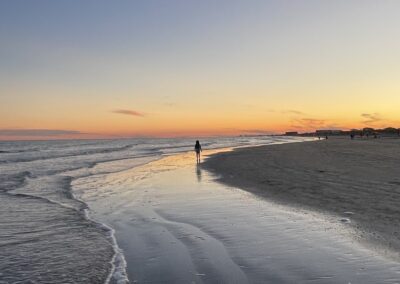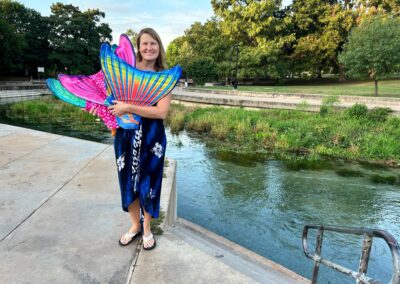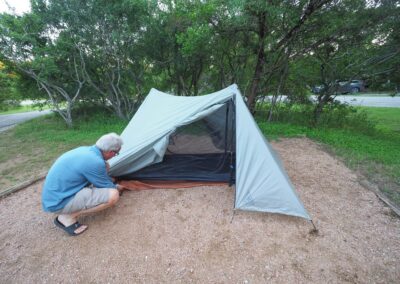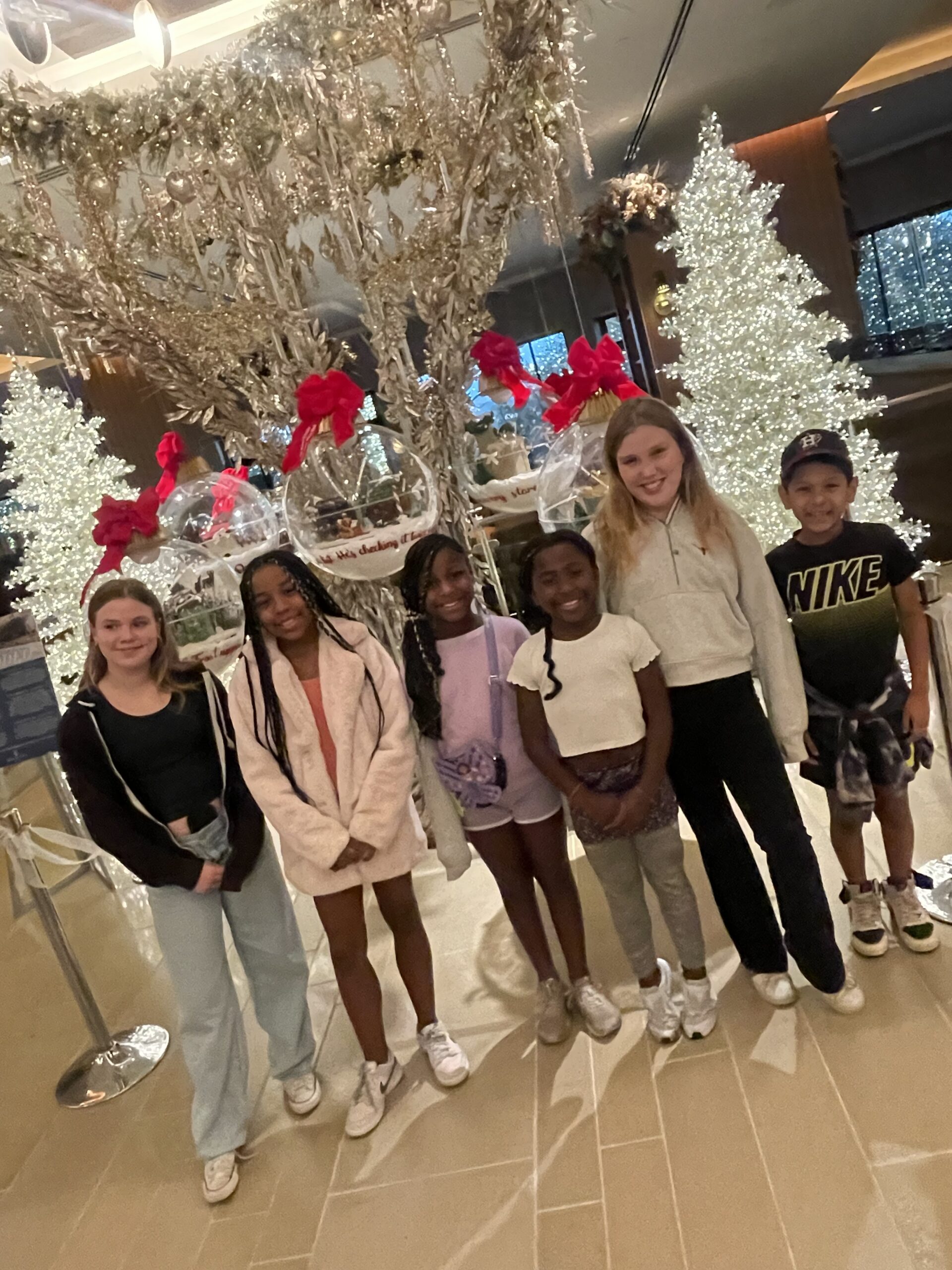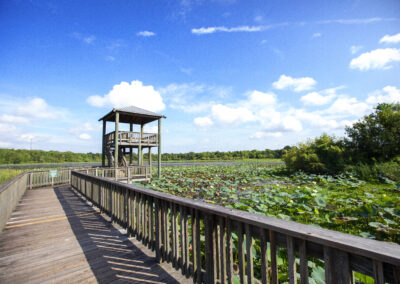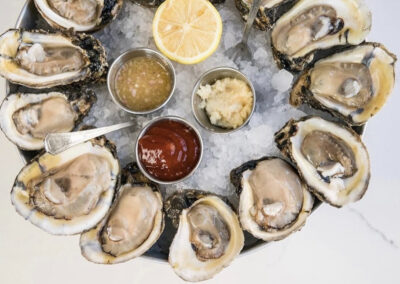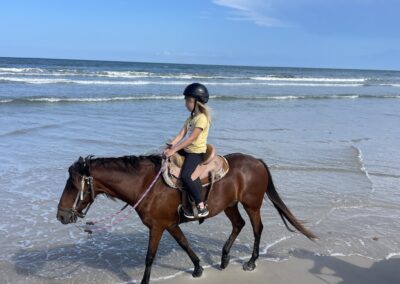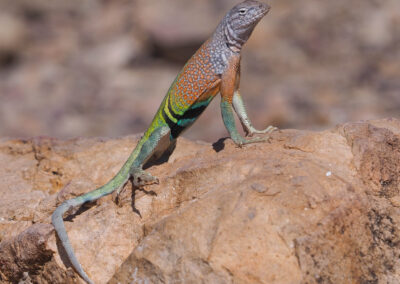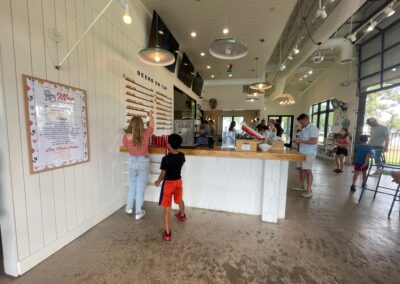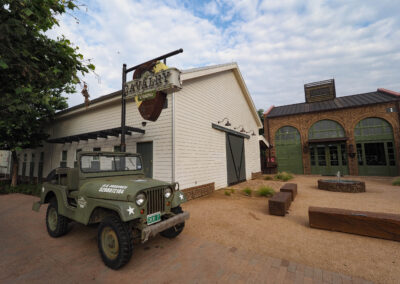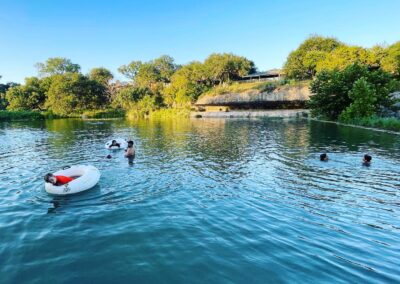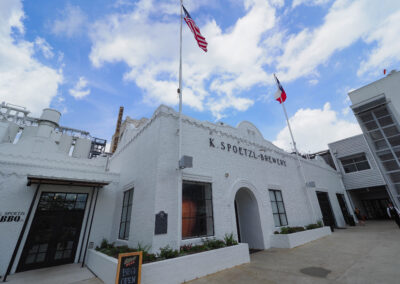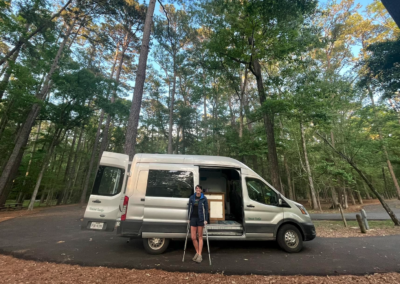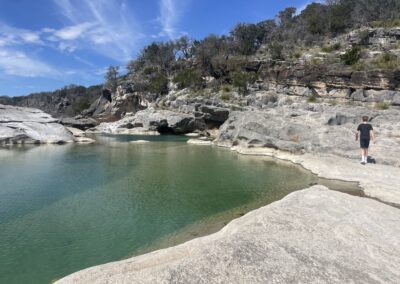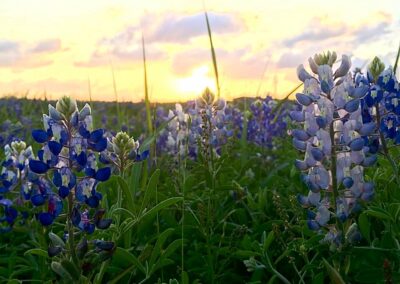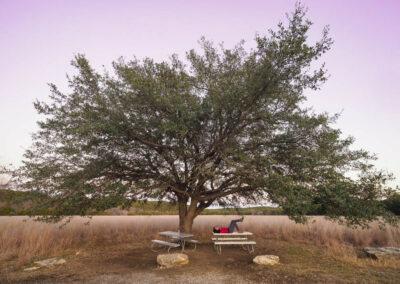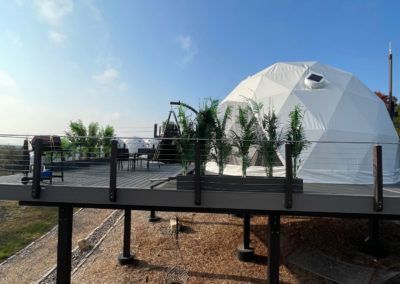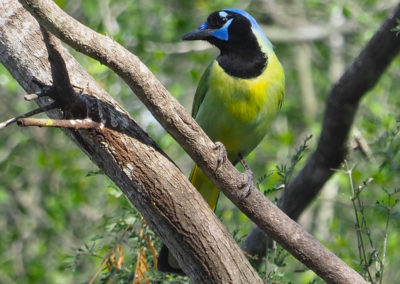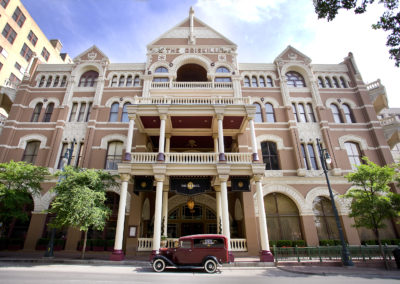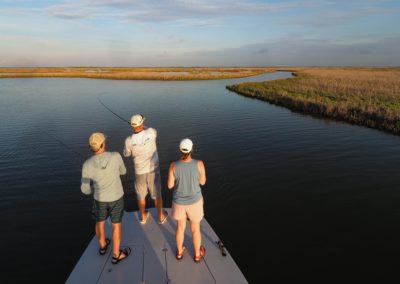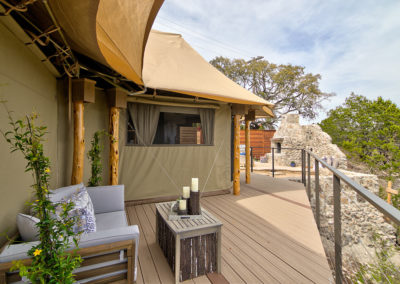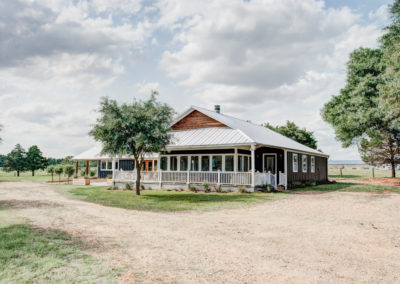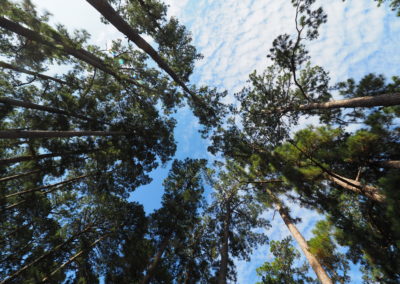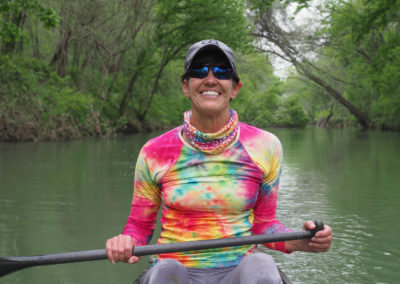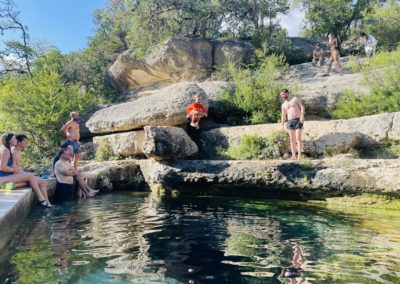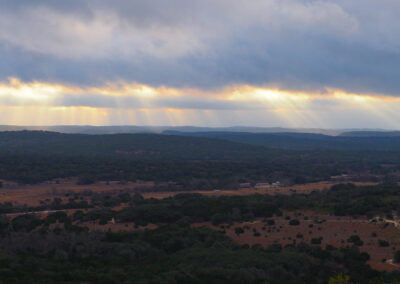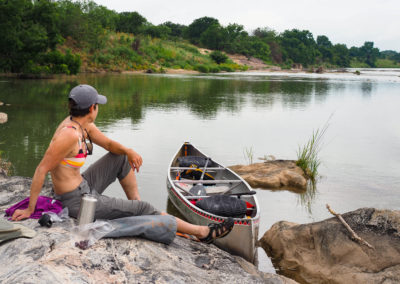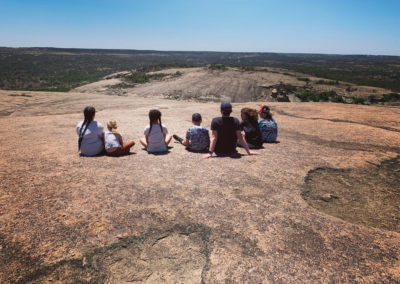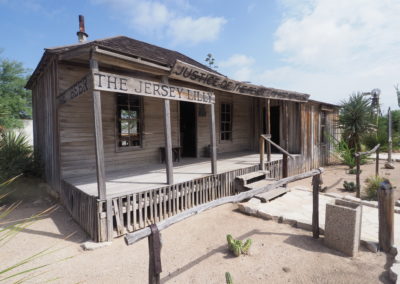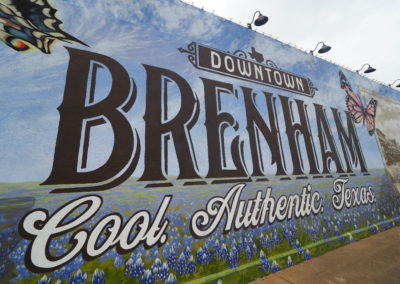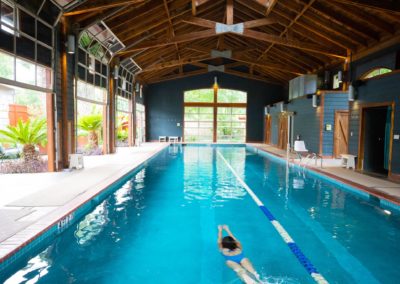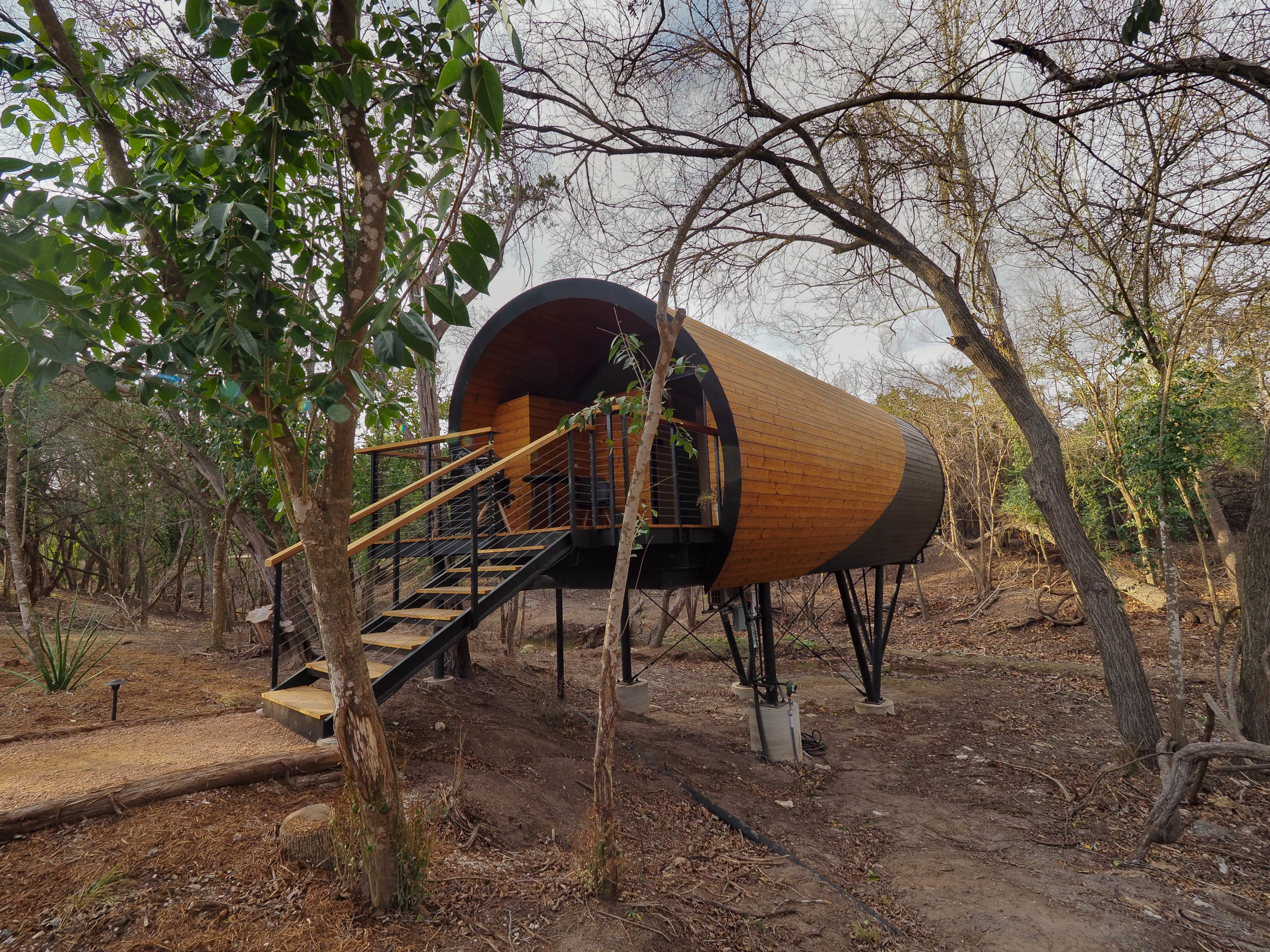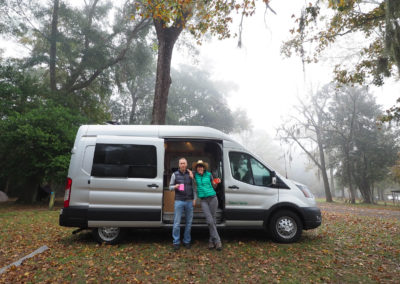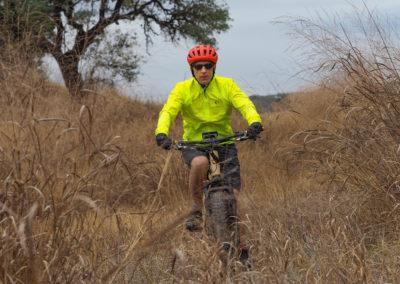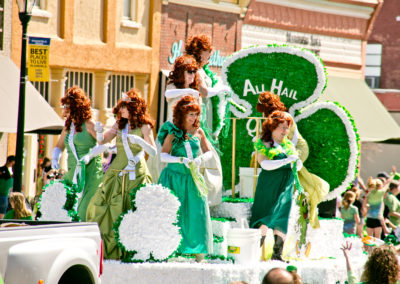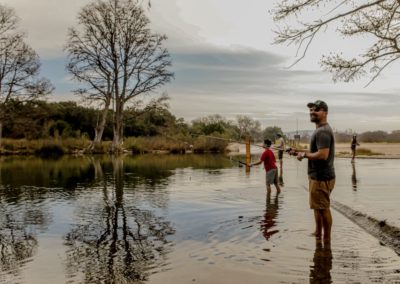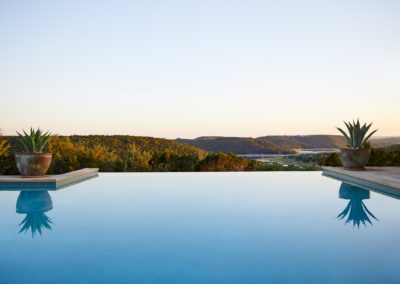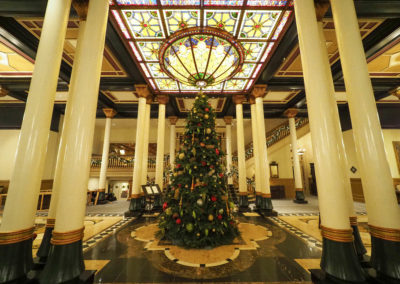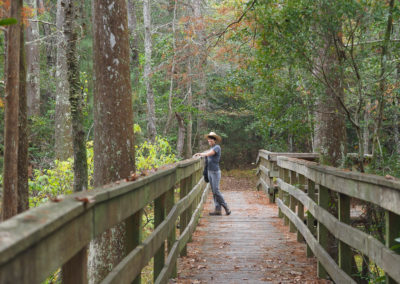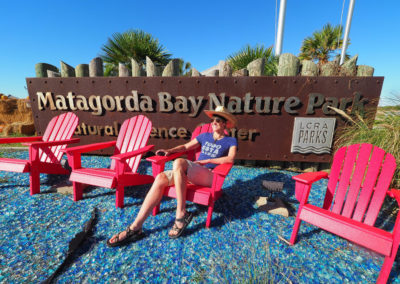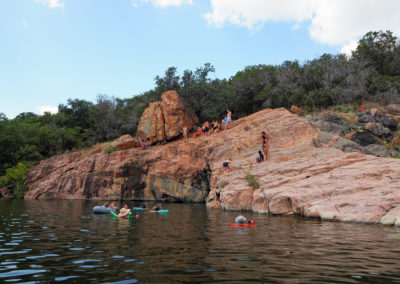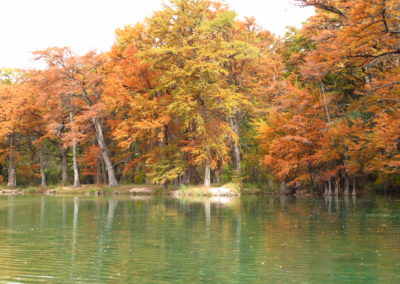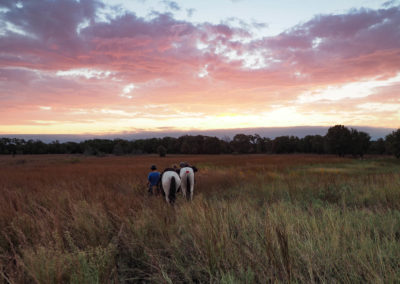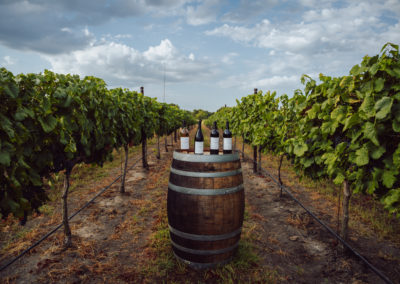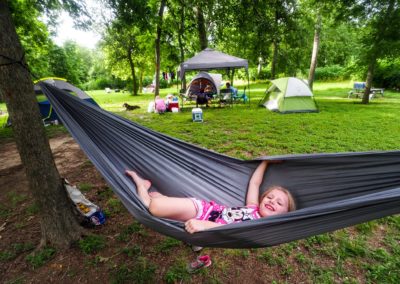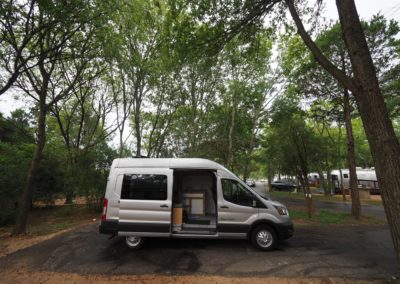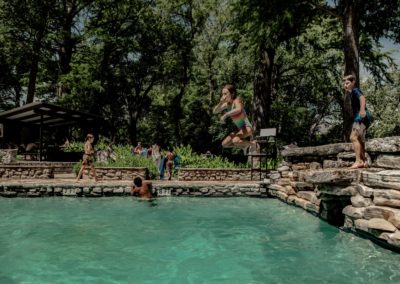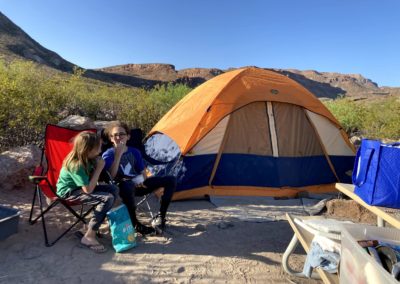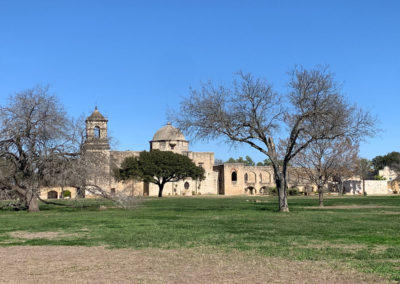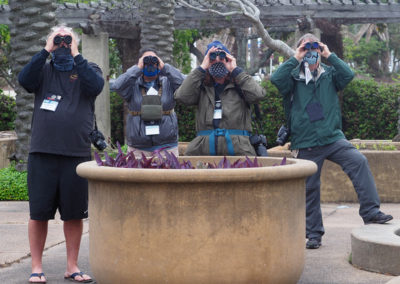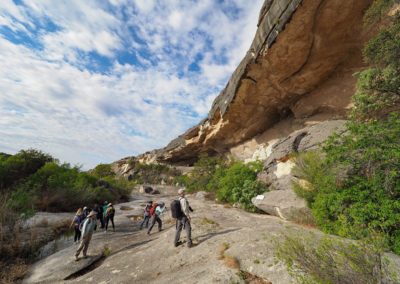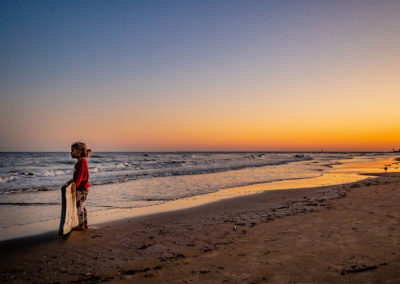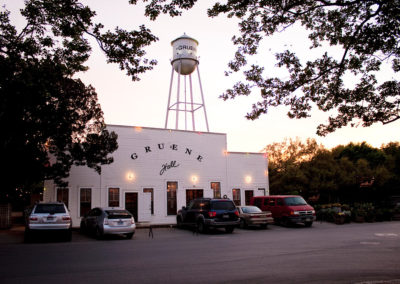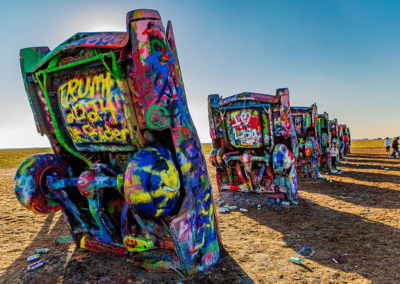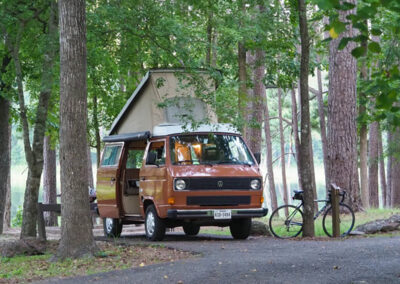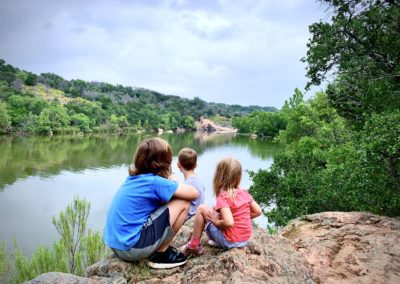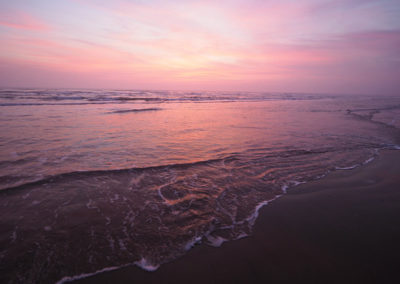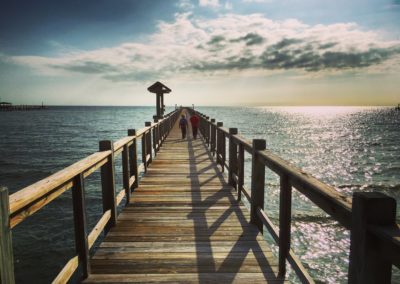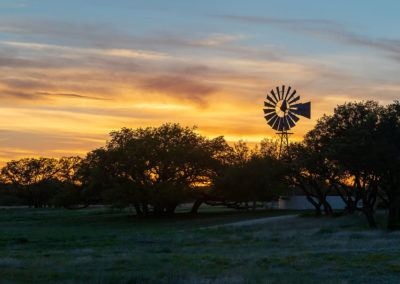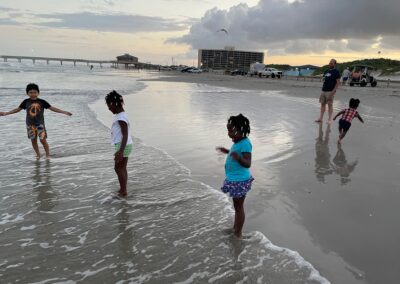It’s almost impossible not to fall wildly in love with Texas in the springtime. As the Lone Star State sheds its wintry coat and the season gives way to sunnier days and warmer weather, beloved Texas bluebonnets blanket fields in brilliant bursts of blue and vibrant wildflowers paint roadsides with a radiant rainbow of color.
If you’ve been worried how wildflowers will fare after the unusually severe winter storm that brought prolonged freezing temperatures, prolific snow and ice and extreme damage across much of the state, don’t be. Experts say bluebonnets and other wildflowers weathered the winter storm well and Texans can look forward to a wonderful wildflower season ahead.
“For the majority of wildflowers, the blanket of snow actually helped insulate them from the extreme freezing temperatures,” said Andrea DeLong-Amaya, the Lady Bird Johnson Wildflower Center’s director of horticulture, who predicts this year’s season to remain typical and on track.
Most native perennial or biennial plants such as bluebonnets fared just fine under the insulated snow and ice, agrees Jason Singhurst, Texas Parks and Wildlife Department’s botanist/plant ecologist.
“We should see great displays of our state flower,” predicts Singhurst.
While the 6- to 8-inch blanket of snow might have protected the Texas bluebonnets and many other native wildflowers from days upon days of freezing temperatures, DeLong-Amaya points out that some early-blooming plants like Carolina jessamine vine and first-to-flower trees such as Texas mountain laurel and redbuds suffered a worse fate, losing their buds due to multiple days of ice.
“The true playout is going to be revealed as the season persists,” says DeLong-Amaya. “The plants that are on the ground or close to the ground are going to be just fine. But the plants that were up in the air–the flowering trees and the vines–those were the ones that were most damaged.”
Prior to the historic Texas snowpocalypse, DeLong-Amaya said January and February saw many uncharacteristically warm days that could have pushed the season into early bloom. Instead, the extreme cold snap slowed things down to the season’s regularly scheduled program and Central Texas’ bluebonnet season is back on course to peak in early to mid-April.
“The sunshine will keep things moving along, and while the snow brought some moisture, we could really use some real rain to make the plants more lush,” says DeLong-Amaya, adding that if we don’t get significant rainfall, the wildflowers will still bloom but they might be a bit smaller and not quite as happy.
With wildflower season on the brink of bursting into full bloom, it’s prime time to fill up the tank, grab your camera and hit the road for a flower-fringed road trip through Texas. Luckily, wildflower hunting is a fairly pandemic-friendly activity, and after the year we’ve all had, there might not be a better time to get outside (socially distanced, of course) and become beguiled by the blooms. Below are 10 ideas for where to go to be wowed by the wildflowers this year.
1. Lady Bird Johnson Wildflower Center
A spectacular and safe off-the-roadside spot to behold Texas bluebonnets and other beautiful blooms is at the Lady Bird Johnson Wildflower Center, www.wildflower.org (open by reservation only; masks required). Home to nearly 900 species of native Texas plants, including hundreds of species of native wildflowers like iconic Texas bluebonnets, buttercups and winecups, the backyard beauty unfolding at the Wildflower Center offers an opportunity to observe species that could be missed from a car. In addition to the highly-anticipated showstoppers such as bluebonnets, visitors can expect to see dewberry, irises, golden groundsel, windflowers, goldeneye phlox, spiderworts, prairie fleabane, baby blue-eyes, agarita, salvias, purple coneflowers and many more–all blooming now or very soon. Time your trip with the Wildflower Center’s weekend plant sales, occurring Fridays, Saturdays and Sundays in April and May (reservations required). Find wildflower facts, map your wildflower drives and brush up on your bluebonnet knowledge at the center’s hub for all things wildflower: Texas Wildflower Center at www.wildflower.org/texas. Or participate in the wildflower watch on Instagram @texaswildflowerwatch using the hashtag #TXWildflowers2021.
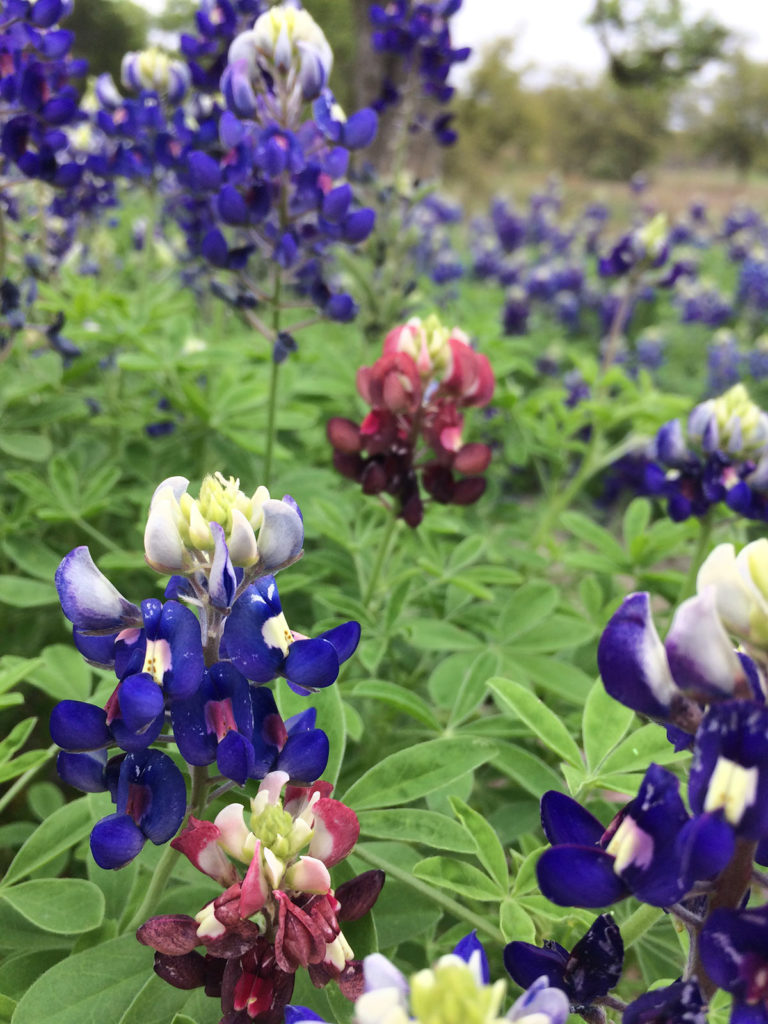
Blue and maroon bonnets at Lady Bird Johnson Wildflower Center
2. Austin parks
Austin Parks offer some of the best places around town to safely view wildflowers, including bluebonnets, which can typically be spotted starting in mid-March, though peak bloom is late-March to early April. While many Austinites are wondering what the impact of the wild winter weather will be on our beloved annual bluebonnets, they seem to have weathered the storm just fine, says Cynthia D. Klemmer, Ph.D., Austin Parks and Recreation’s environmental conservation program manager. “Bluebonnets and other early spring wildflowers are actually tough survivors that are well-adapted to weather extremes,” says Dr. Klemmer. “Though we think of them as appearing suddenly each spring–like magic!–they’ve actually been quietly preparing for their spring show throughout the winter.” So which parks have displays worth visiting? Melissa Hand, Park Ranger II with the City of Austin Parks and Recreation, recommends visiting the wildflower meadow at the Barton Creek Greenbelt trailhead located in Zilker Metropolitan Park. Other great parks for wildflower viewing include Commons Ford Ranch Metropolitan Park, Emma Long Metropolitan Park, Bull Creek District Park, Mary Moore Searight Metropolitan Park, Onion Creek Metropolitan Park and Walter E. Long Metropolitan Park, according to Hand. “Lady Bird Johnson promoted the preservation of wildflowers and her legacy can be seen throughout Austin for us to enjoy year after year,” says Hand, who enjoys the heritage of the local wildflower population. “It is our responsibility and our pleasure to care for these native flowers that provide not only homes and food for native wildlife, but enjoyment for all Austinites.”
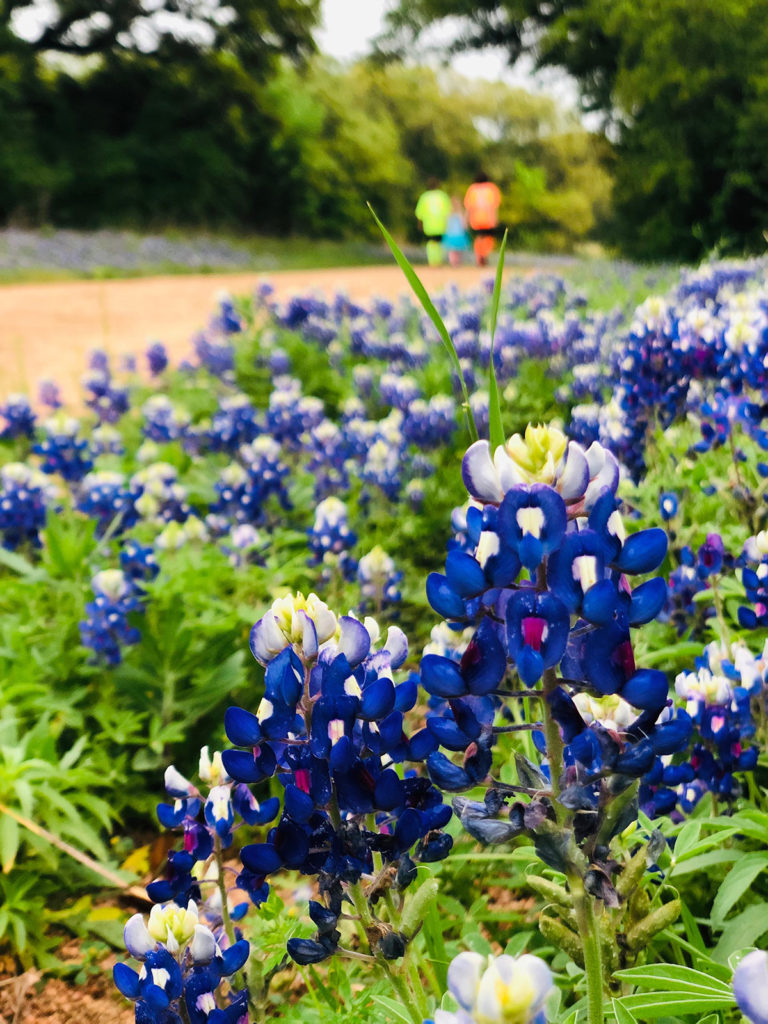
3. Austin nature preserves
Another great spot to view the wildflowers? The plethora of preserves that are part of the Austin Parks system, many of which offer great opportunities for wildflower watching while hiking. Hand recommends exploring Blunn Creek Nature Preserve, Zilker Nature Preserve and Goat Cave Karst Preserve for beautiful trails lined with wildflowers. Hand says the Louis René Barrera Indiangrass Wildlife Sanctuary is also a wonderful place to experience our native Blackland Prairie wildflowers, but is only accessible with special permission such as a ranger-led program or volunteer day.
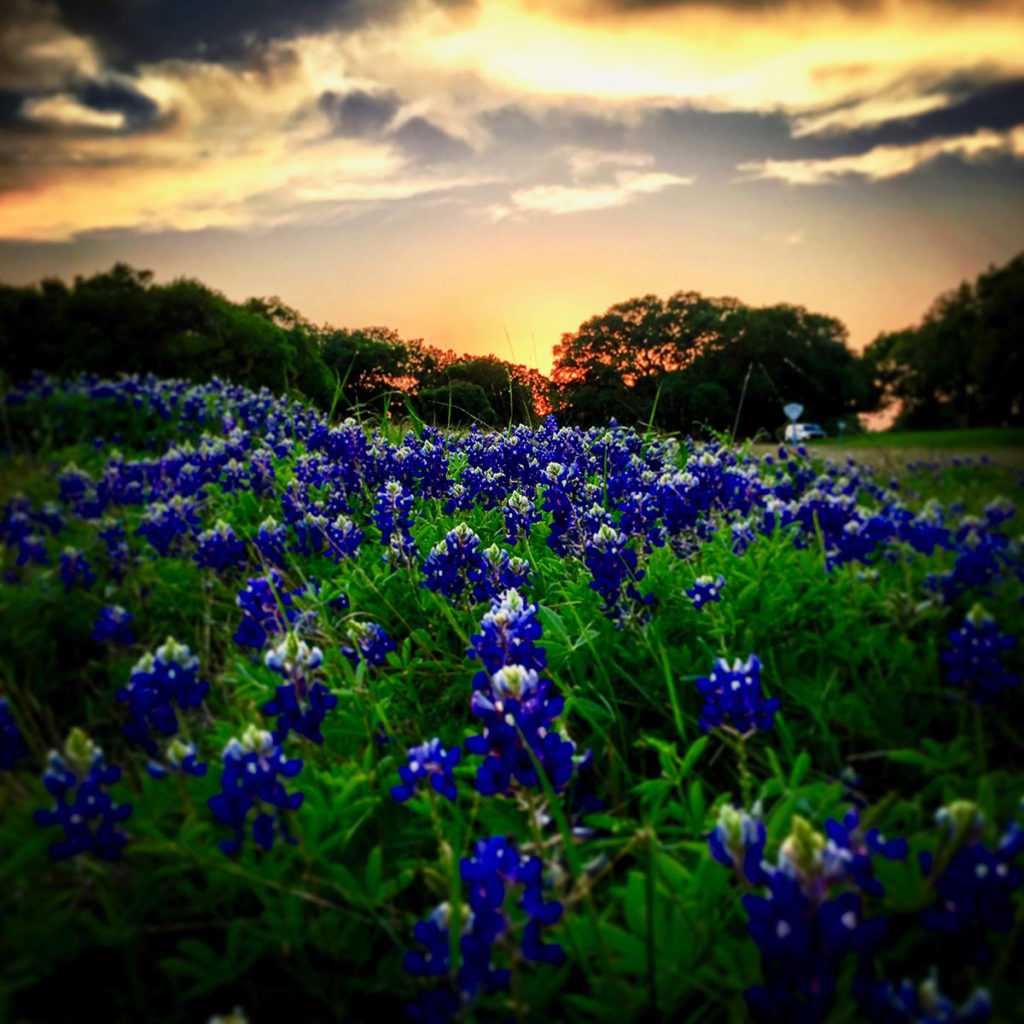
Bold and beautiful bluebonnets captured at sunset last year in Circle C. Photo by Travis Albrecht
4. Texas state parks
There are 89 state parks found throughout Texas, and they offer some of the best and safest backdrops for families wanting to take wildflower photos away from busy roadways. Pedernales Falls State Park, Lyndon B. Johnson State Park & Historic Site, Government Canyon State Natural Area, Goliad State Park and McKinney Falls State Park are among those that consistently teem with wildflowers. Singhurst says everything is pointing towards a very promising spring wildflower season. “Although we are still amidst a global pandemic, I hope you are able to take advantage of social distance hiking and exploring the spring wildflowers of our state parks, national forests, national parks and nature preserves,” says Singhurst. “Texas is blessed with an extraordinary amount of plant diversity (6000+ species) found within our 10 distinct ecoregions and more than 320 endemics (plants found nowhere else but Texas).” Texas state parks have reduced the number of visitors to allow for social distancing and enhanced cleaning. As a result, reservations are highly recommended for both day passes and overnight stays and you should check COVID-19 guidelines before visiting at www.tpwd.texas.gov.
5. Texas Bluebonnet Country
One of your best bets for seeing big bursts of bluebonnets and other iconic wildflowers? Set out on the 80-mile, figure-eight drive through Washington County–aka Bluebonnet Country–to cruise the flowering farm roads winding through Brenham to Burton, Independence, Washington and Chappell Hill and back to Brenham. Just don’t jump in the car quite yet, says Mike Shoup, a plant expert and owner of the Antique Rose Emporium just north of Brenham. “This will be an interesting year,” says Shoup. “This latest hard freeze did not kill the bluebonnets, but did slow the progress of flowering by a couple of weeks.” Shoup predicts a mixed bag of flower intensity because of this, as well as the lack of consistent rains in the fall. “April and May should be stunning in overall wildflower coverage with March lagging behind because of the hard freeze,” says Shoup, adding that Old Baylor Park as well as other areas throughout Washington County such as Washington-on-the-Brazos State Historic Site should have beautiful but later-than-normal blooms starting in April. Before setting out to explore Washington County’s Bluebonnet Trail, check out its Wildflower Watch webpage, visitbrenhamtexas.com/wildflower-watch, where you’ll find everything from a wildflower driving map and wildflower etiquette and safety tips to inspiring wildflower photos and updated wildflower sightings. Time your trip with the official Bluebonnet Festival of Texas, taking place in Chappell Hill April 10 and 11 (COVID-19 guidelines will be practiced).
6. St. Edward’s University
Roll down the windows as you cruise into St. Edward’s University to soak in the sweet scents of mountain laurel and a spectacular showcase of bluebonnets scattered across the 160-acre campus, especially along the edge skirting South Congress Avenue.
7. Find flowers in Fredericksburg and the Texas Hill Country
What pairs better than wine and wildflowers? Savor spring’s warm weather and seasonal blooms as you sip and sample award-winning wines at 42 wineries scattered throughout the picturesque Texas Hill Country during the Wine & Wildflower Journey (March 22 through April 16). With the purchase of a digital Event Passport ($100/couple or $65/individual), consumers can taste at up to four wineries per day over the course of each event, as well as receive exclusive discounts on bottle purchases. Plus, this year’s celebration is even longer than past years, with 26 days to discover Texas wine and take in the colorful Hill Country wildflowers. https://texaswinetrail.com/wine-wildflower-journey/. Another great Hill Country hotspot to go wild for the wildflowers is at Wildseed Farms, www.wildseedfarms.com, a working wildflower farm brimming with more than 200 acres of flowering fields just outside of Fredericksburg. “Due to the fall and winter drought and record freeze recently, the wildflower blooms in the Hill Country are going to be a tad late–April 15, lasting through May,” says John Thomas, owner and founder of Wildseed Farms. “The farm is going to be gorgeous around mid-April.” In addition to bluebonnets, expect to soak in sights of red poppies, coreopsis and Indian blankets.
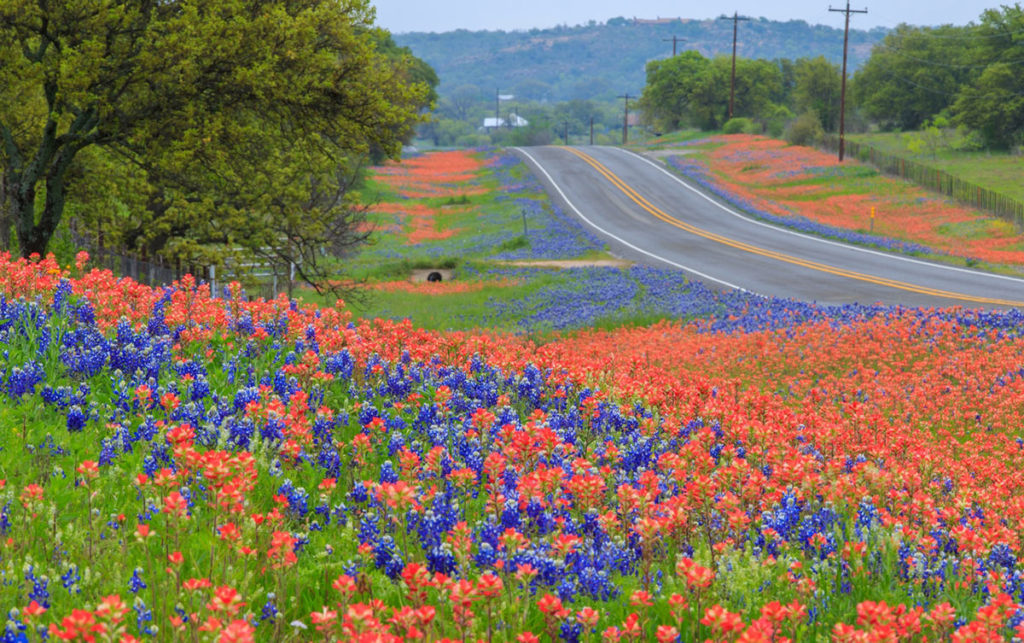
Bluebonnets and wildflowers found 10 miles north of Llano Texas on Hwy 16. Photo by Lake Somerville State Park Ranger Tommy Snow
8. Willow City Loop
Take a floral-fringed drive along Willow City Loop, a 13-mile scenic drive boasting meadows and valleys cloaked in colorful blooms spanning bluebonnets and Indian paintbrush to firewheels and poppies. Make the drive during the weekdays to avoid weekend crowds.
9. Burnet
Officially designated as the “Bluebonnet Capital of Texas,” this Hill Country town is widely considered one of the best spots in the state to view the wildflowers. Soon, wildflowers will adorn roadsides in abundance along the drive toward Canyon of the Eagles located on the northeast shoreline of Lake Buchanan. Time your trip with Burnet’s 38th Annual Bluebonnet Festival taking place on April 9-11.
10. Marble Falls
Marble Falls, an hour northwest of Austin, is on the brink of full bloom with big bursts expected to crop up in late March to early April. “Already, the bluebonnets in yards and in consistently irrigated areas like outside of the Bluebonnet Cafe are starting to pop up, but those in big fields and roadsides haven’t bloomed just yet,” says Erika Sopel, Visit Marble Falls’ director of marketing. Stop by the Marble Falls Visitor Center to pick up insider tips and a map outlining the various Highland Lakes Bluebonnet Trails––self-guided scenic drives in and around Marble Falls as well as Horseshoe Bay, Kingsland, Llano and beyond that become blanketed in colorful wildflowers spanning bluebonnets, coreopsis, Indian paintbrush and yucca blooms. Beginning later this month, an online interactive wildflower map will guide you to the best spots in and around the area at www.visitmarblefalls.org/wildflowers.
Wild About Wildflowers
Tips for Touring:
(Contributed by Austin Parks and Recreation)
As with most things, there is some etiquette to observe in order to have a great experience while doing your part to take care of Mother Nature:
- Plan ahead and prepare. If you are looking for a great spot to take family photos try scoping out the spot before venturing out in your finest. Highway medians are not safe or recommended.
- Stay on durable surfaces—Bluebonnets don’t “bounce back.” The hole that you create by sitting on them is going to stay a hole, and that little patch of flowers will not provide food for pollinators and will not set seed for future years. The best way to accomplish the perfect picture is by posing your family on a trail in front of, or just behind a stand of bluebonnets, and then playing with your camera angle so that it looks like you and/or your kids are immersed in them.
- Respect wildlife. Bluebonnets and other wildflowers provide a plethora of animals with essentials needs including food, cover, and a place to raise young. Be careful when choosing a spot for a photo or you might dislodge bees, caterpillars or even snakes from their homes.
- Respect other visitors while enjoying the wildflowers. Getting out in a park to enjoy our vibrant wildflower displays can bring lots of oohs and aahs, but please be mindful of the noise you make. If you pack a picnic, make sure to pack all your trash and leftovers out with you so that our parks stay clean for the next person to enjoy.
• To slow the spread of COVID-19 it is recommended that you take extra precautions while visiting parks. Keeping to your household, carrying hand sanitizer, and wearing a mask when social distancing is difficult are all ways you can keep your family safe. You can learn more about COVID-19 and current recommendations by visiting www.austintexas.gov/covid19.

Wild Wildflower Facts:
(Contributed by Lady Bird Johnson Wildflower Center)
You can eat some wildflowers. Pink evening primrose, often called buttercups, are yummy, according to DeLong-Amaya who enjoys their mild foliage on salads and in sandwiches. Just be sure to get permission to collect plants (or parts) from private property and pick them from a clean source like your garden or a field rather than collecting them from roadsides where there could be contaminants, she warns. Giant spiderwort is another common wildflower to incorporate into your menu. “You can eat all of the aerial parts–the stems and leaves are delicious sautéed and the flowers make a decorative garnish,” says DeLong-Amaya. Wild onions, which have pretty white, light pink or yellow flowers, have delicious edible leaves that taste similar to green onions or chives. But you should never eat anything unless you are completely convinced of what it is, warns DeLong-Amaya. “If you think it’s a wild onion, crush the leaves and smell them–if you can’t smell an onion odor, don’t risk it. You could get very, very sick.”
There’s more than one bluebonnet. “Many people don’t realize there are six different species of bluebonnets in Texas,” says DeLong-Amaya. The three most well-known species include the Texas bluebonnet, Sandyland bluebonnet and the Big Bend bluebonnet.
You won’t get a ticket for picking bluebonnets. It’s a common myth that it’s illegal to pick the state flower. While there are laws against trespassing and damaging property, bluebonnets don’t have any special protection compared to other flowers or plants.
Early & Late Spring Bloomers:
5 common early-spring bloomers in Texas include:
- Bluebonnet
- Pink evening primrose
- Indian paintbrush
- Winecup
- Coreopsis
5 common late-spring bloomers in Texas include:
- Indian blanket
- Black-eyed Susan
- lantana
- Turk’s cap
- Horsemint

Did you know? A dozen fun facts behind the bloom.
- The Indian paintbrush is actually a pretty parasite–they will attach themselves and draw nutrients from other plant species such as the bluebonnet.
- Antelope horns, from the milkweed family, are a host plant for the monarch butterfly.
- Texas parsley, which can grow up to 5 feet high, is the host plant for the black swallowtail butterfly.
- Bluebonnets are selfish and prefer disturbed soil–they don’t like competition and they thrive in landscapes that have been heavily grazed by cattle, been scorched by fire or are defined by poor quality soil.
- There are many kinds of bluebonnets in Texas.
- The bluebonnet became the Texas state flower in 1901, but since it has look-alike relatives, all lupine species were designated as the official state flower 70 years later.
- Big Bend bluebonnets in West Texas grow up to 3 feet high.
- Shorter, more common Texas bluebonnets grow 15 to 24 inches.
- Bluebonnets typically bloom from early March to early May.
- Up close, the flower looks like a little bonnet.
- After it rains, look for a drop of water in each bowl-like leaf.
- Bluebonnets are part of the legume family.











